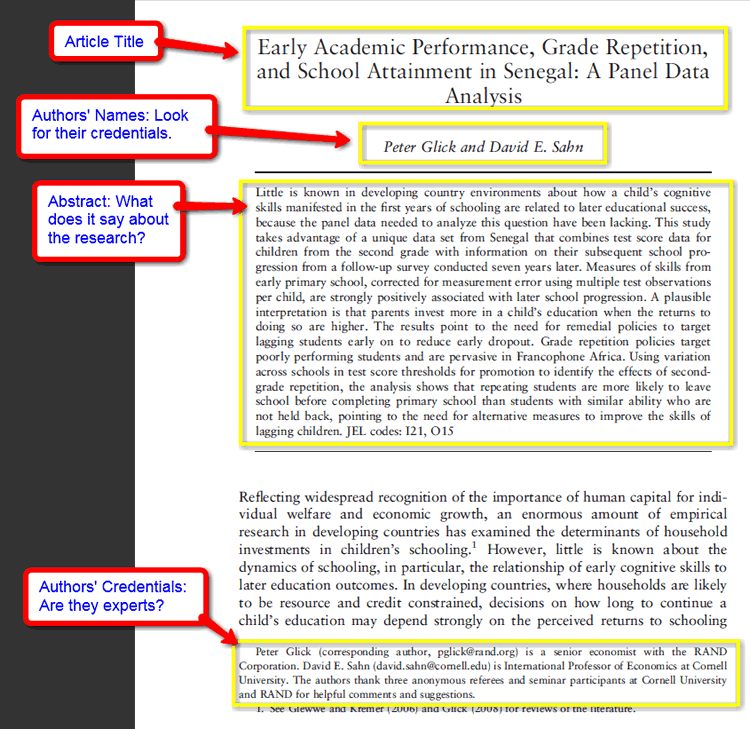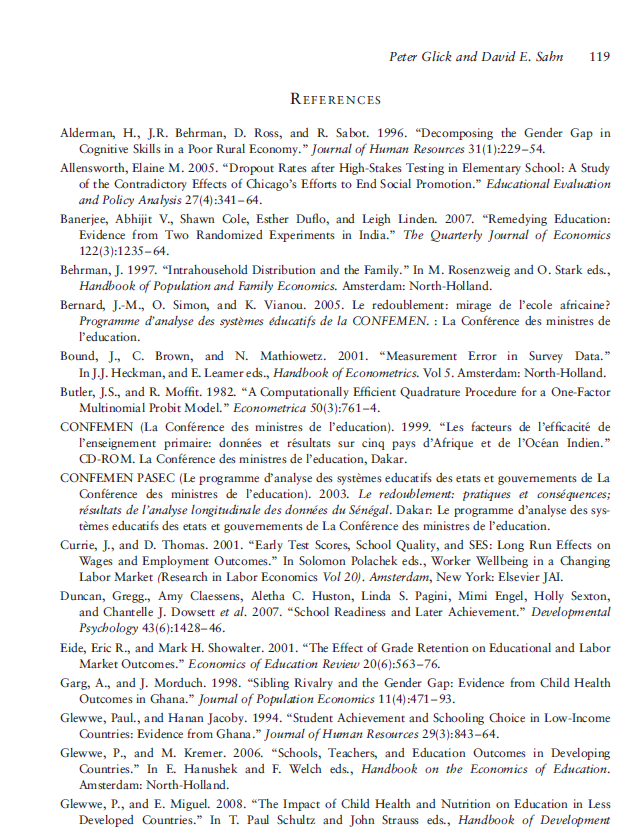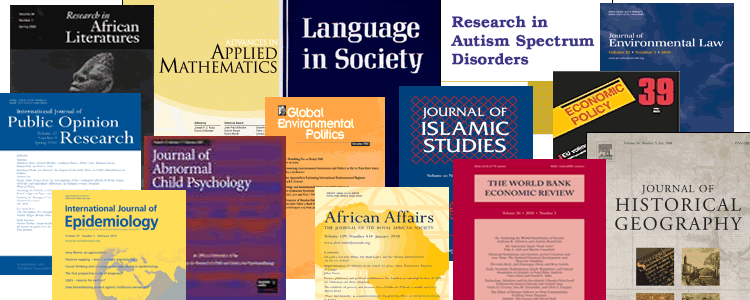We searched the Scholars Portal Journals database and found an article from the The World Bank Economic Review (The World Bank Economic Review 2010 24(1):93-120; doi: 10.1093/wber/lhp023).
Here are images of the first page and bibliography of the article. Look at the features and then let's analyze whether it's scholarly or not, using J-A-B-s-a.
Article First Page
The first page of an article provides much of the information you need to determine if it's scholarly. What can you tell from this?

Article References Pages
At the end of the article there's a bibliography ("References"). Check to see if there's a reasonable bibliography of scholarly works that are relevant to the topic. Here's the beginning of the References page of this article:

J-A-B Anaysis
Journal
From the title of the journal, we can assume it is a scholarly publication. The World Bank is a reputable organization for research, and the term "Review" in the title suggests it's scholarly.
If you clicked on the link to go to the article site, you would have seen that it's published by Oxford University Press, is "the most widely read scholarly economic journal in the world" ( see site) and uses a peer-review process. These are all features of scholarly journals.
Authors
A scholarly article provides the name of the author as well as information about the author, who should be an expert on the topic of the article. Often there is more than one author, because scholars work in teams to produce new research. Look for the authors' qualifications. Do they work at a research institute or University? What do they do? Can they be contacted with questions?
If there's an author listed, but no qualifications are provided, there's a good chance the author is paid by the publisher to write the article. The author is a staff writer or a freelance writer. This would make it non-scholarly. Scholars are rarely paid by journals for their articles; writing the article is part of the process of researching.
This paper provides details about where the authors work and what they do. One is a senior economist with a reputable research corporation and the other other is a professor at Cornell University. They appear to be experts, based on this information. (Note that the authors recognize anonymous referees, which indicates a peer-review process took place.)
Bibliography
The bibliography is extensive. Although we only see the beginning of the first page, it's in alphabetical order and this page only reaches the G's. The sources cited look scholarly and on topic. There is no doubt that this bibliography is scholarly.
Additional Information : JABsa
At this point we probably have enough to decide it's scholarly, but we can also consider:
Source
We found this article listed in a Scholar's Portal database - a scholarly source. However, we don't know for sure that ONLY scholarly journals are included in this database, so we can't be sure it's scholarly from this information.
Abstract
An abstract is a description of the article. Scholarly articles have abstracts that describe the type of research done, the methodology used, and the results of the study. Look for evidence of these things in the abstract.
This abstract describes data analysis and the results achieved. It appears scholarly.
Evaluation
This article is scholarly, based on the information provided.
This is the end of the Scholarly Resources tutorial. You should now be skilled at evaluating the scholarship of a resource using the JABsa criteria.



